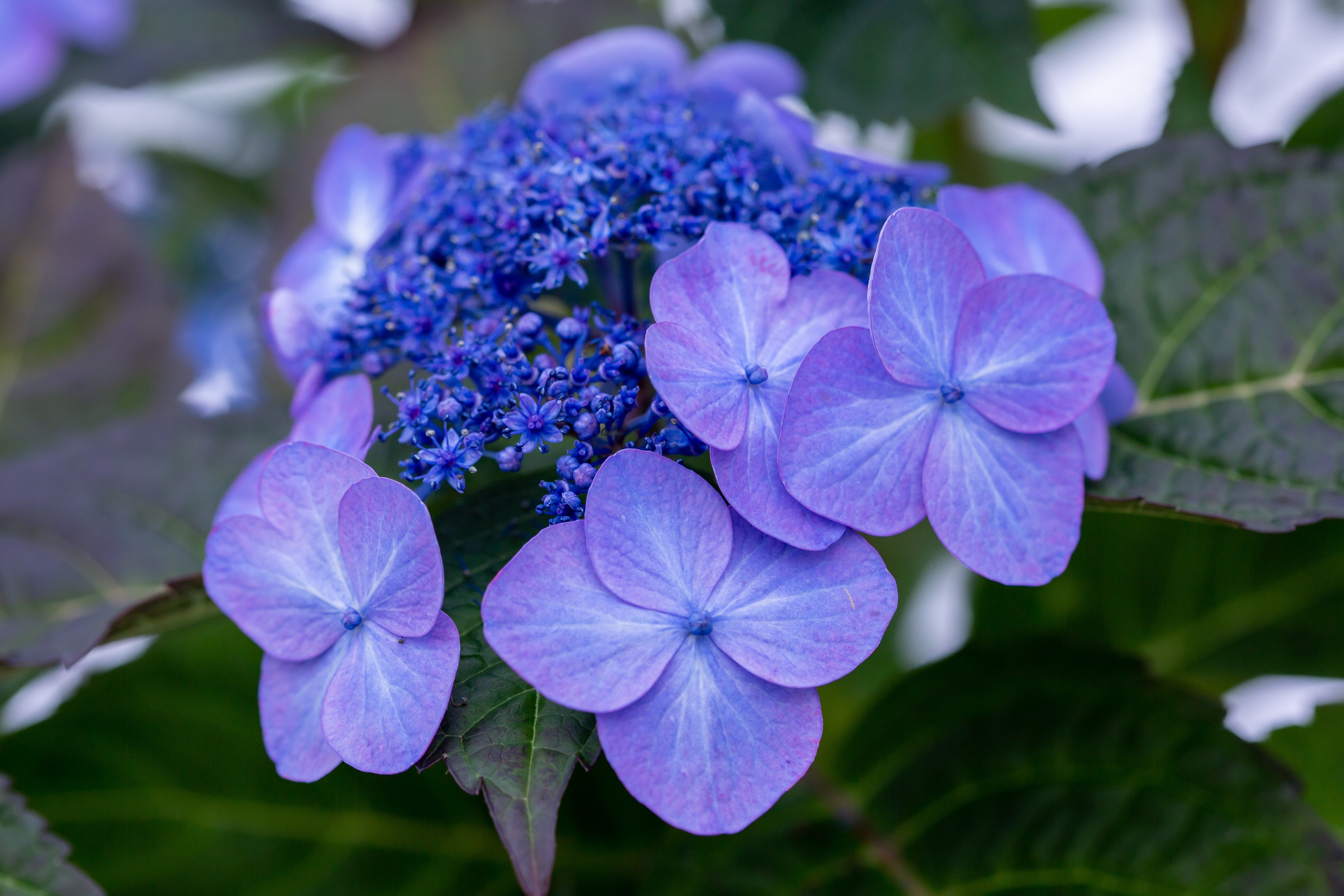Hydrangea, commonly known as the hortensia, is a genus of more than 75 species of flowering plants native to the Americas and Asia. These popular flowering shrubs are known for their large and colorful blooms. The colors range from blue, lavender, white, light pink, and hot pink. There are several types of hydrangeas, each with unique characteristics and care requirements. These deciduous shrubs bloom from early summer to late fall with long-lasting bold flowering heads.
Bigleaf Hydrangea (Hydrangea macrophylla) - Bigleaf hydrangeas are one of the most common types of hydrangeas. They have large, round flower heads that can range in color from pink to blue, depending on the pH of the soil. They prefer partial shade and moist, well-drained soil. To maintain their color, you can add aluminum sulfate to the soil to make it more acidic (for blue blooms) or lime to make it more alkaline (for pink blooms).
Panicle Hydrangea (Hydrangea paniculata) - Panicle hydrangeas are known for their cone-shaped flower heads that bloom in the summer and fall. They prefer full sun to partial shade and can tolerate a wide range of soil types. They are also relatively low-maintenance and can withstand colder temperatures than other hydrangea types.
Smooth Hydrangea (Hydrangea arborescens) - Smooth hydrangeas are native to North America and are known for their white, round flower heads. They prefer partial shade and moist, well-drained soil. They are relatively easy to care for and can tolerate colder temperatures.
Oakleaf Hydrangea (Hydrangea quercifolia) - Oakleaf hydrangeas are known for their large, lobed leaves that resemble oak leaves. They have cone-shaped flower heads that bloom in the summer and fall and can range in color from white to pink. They prefer partial shade and well-drained soil.

Caring for these gorgeous shrubs does require some attention.
- Hydrangeas need regular watering, especially during hot, dry weather. Make sure the soil is moist but not waterlogged.
- Fertilize your hydrangeas in the spring and again in the summer with a balanced fertilizer.
- Prune your hydrangeas in the late winter or early spring before new growth appears. Bigleaf hydrangeas should be pruned only after they have bloomed.
- In colder climates, cover your hydrangeas with burlap or another protective material to prevent winter damage.
- As mentioned earlier, the pH of the soil can affect the color of the blooms for some types of hydrangeas. To change pink color to blue, lower the soil pH by adding Garden Sulfur Aluminum Sulfate. To change blue to pink, raise the soil pH by adding Garden Lime. Test your soil and adjust the pH accordingly.
Hydrangeas are beautiful and versatile plants that can thrive in a variety of growing conditions. By understanding the different types of hydrangeas and their care requirements, you can enjoy their stunning blooms year after year. For more growing tips for hydrangeas, please check out our Growing Guides.

Leave a comment